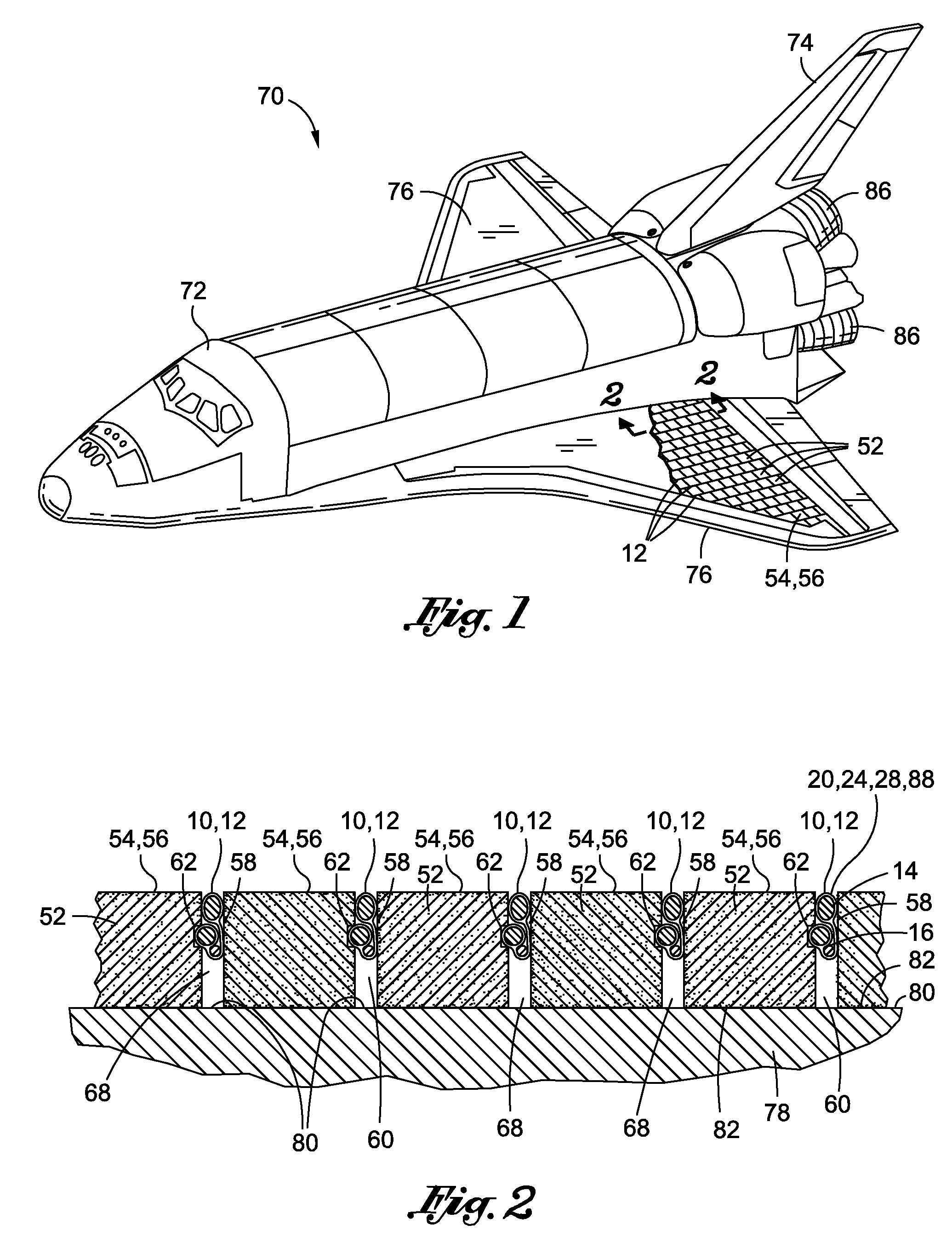Tile gap seal assembly and method
a sealing assembly and tile technology, applied in the field of thermal protection systems, can solve the problems of affecting the overall utility of the seal, the difficulty of repairing and/or replacing the seal assembly or the tile, and the hardening compound applied over the filler bar that complicates the removal, repair and/or replacement of the til
- Summary
- Abstract
- Description
- Claims
- Application Information
AI Technical Summary
Benefits of technology
Problems solved by technology
Method used
Image
Examples
Embodiment Construction
[0035]Referring now to the drawings wherein the showings are for purposes of illustrating preferred and various embodiments of the disclosure only and not for purposes of limiting the same, shown in FIG. 1 is a perspective illustration of a vehicle 70 which may employ one or more seal assemblies 12 for sealing tile gaps 60 between adjacently disposed tiles 52. The seal assembly 12 as disclosed herein may be installed within tile gaps 60 of tiles 52 mounted on a substructure 78 such as an airframe substructure 78 of the vehicle 70 illustrated in FIG. 1.
[0036]However, the seal assembly 12 may be installed within tile gaps 60 of tiles 52 that may be used in any application including, but not limited to, external surfaces of vehicles, internal surfaces of engines such as combustion chambers and nozzles in turbine and ramjet engines and nozzles in rocket engines as well as other high temperature environments. In this regard, the seal assembly 12 may be installed within tile gaps 60 of ti...
PUM
 Login to View More
Login to View More Abstract
Description
Claims
Application Information
 Login to View More
Login to View More - R&D
- Intellectual Property
- Life Sciences
- Materials
- Tech Scout
- Unparalleled Data Quality
- Higher Quality Content
- 60% Fewer Hallucinations
Browse by: Latest US Patents, China's latest patents, Technical Efficacy Thesaurus, Application Domain, Technology Topic, Popular Technical Reports.
© 2025 PatSnap. All rights reserved.Legal|Privacy policy|Modern Slavery Act Transparency Statement|Sitemap|About US| Contact US: help@patsnap.com



